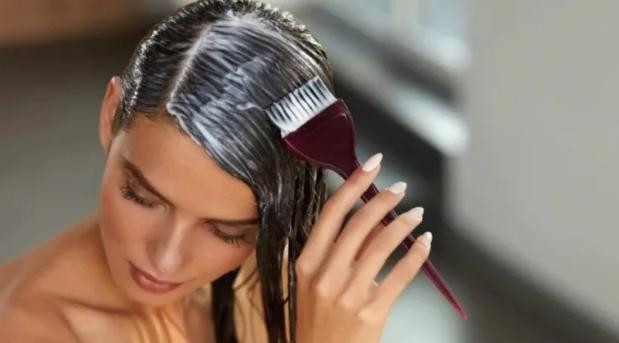Hair dye can change your look, but it can also damage your hair. Expert advice will help you restore your hair safely and balance the frequency of hair dyeing.
Anyone who has ever dyed their hair knows that after dyeing, you will need to re-dye it at some point, which means extending the cycle of chemical exposure. In fact, many people want to dye their hair but are afraid of chemical exposure.
However, according to experts, abstaining from dyeing is not really necessary. Instead, all we have to do is schedule regular restoration to ensure our hair is both beautiful and healthy. So, how often should you dye your hair?
 Choosing the right dyeing and care method will help keep your hair healthy.
Choosing the right dyeing and care method will help keep your hair healthy.Dr. Swati Mohan, Senior Consultant, Department of Dermatology, Fortis Escorts Hospital, Faridabad, has compiled some tips on how to strike a balance between the need to change your look and the health of your hair when colouring. According to the expert, the frequency of colouring your hair depends on the type of method you choose. There are three main methods of colouring your hair:
1. Permanent hair dye
Permanent hair colour changes the structure of the hair fibre. So the change will last until your hair grows back from the root. 'You have to be very careful when choosing permanent colour,' says Dr Mohan. 'The chemicals involved - ammonia and hydrogen peroxide - are very damaging to your hair.
These two chemicals work together to open up the hair's cuticle and access the inner structure, creating a colour change. This process lasts up to eight weeks but requires deep care as your natural hair grows back.'
 Hair dyeing is a fun hobby but it can also be harmful to your hair.
Hair dyeing is a fun hobby but it can also be harmful to your hair.The main thing about permanent hair colour is that the bleach used can also cause serious damage to your hair. Speaking about this, Dr Mohan said: 'Sometimes very high doses of bleach are involved in lightening your hair significantly.
This process can leave your hair vulnerable to moisture loss and leave it feeling brittle, fragile, and prone to damage. In this case, the less often you re-dye your hair, the safer it is. Also, don't think about re-dying the entire length of your hair before 8 weeks.
2. Semi-permanent hair dye
If you’re someone who doesn’t want a permanent change in hair colour and also wants to stay away from chemicals, you should consider semi-permanent hair colour. Speaking about how often, Dr Mohan advises: ‘If you just want to change the tone of your hair – warmer or cooler – there are less permanent options that are less damaging. Semi-permanent colour can be used as often as you want as it’s simply a surface pigment that can be removed with a single wash.’
 Experts recommend not to re-dye your hair too often.
Experts recommend not to re-dye your hair too often.3. Dyeing method with ammonia-free ingredients
There is an ammonia-free hair dye that can cover grays or enhance your hair's natural color. Ideally, it can last up to 24 shampoos.
This method falls somewhere in between the two. It lasts longer than semi-permanent hair color but doesn’t use as many chemicals, unlike permanent hair color.
'Non-permanent hair colour does not contain ammonia and only requires a small amount of hydrogen peroxide to gently lift the hair cuticle so the pigment can be retained,' says Dr Mohan. 'If the non-permanent colour is just being used to blend greys, then around four weeks is a good time to wait before re-colouring your hair.'
According to Health and Life